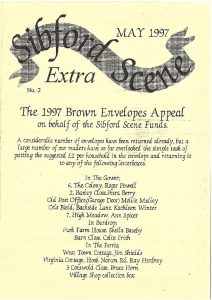Holly House
Holly Tree Close, now Holly House, was the ancestral home of the Harris family, who were living in Sibford Ferris from the early seventeenth century and probably longer. Violet Harris is the one remaining person in the village with the Harris surname, although there are several descendants of the female line.
Up to the end of the nineteenth century it would have been a working farm and a wooden floor was put in the centre of the barn so that the farmer could hear the flails and know that his men were still working, without leaving his fireside.
Holly Tree Close was sold by the Harris’s in 1873 along with 143 acres of land in 3 lots, and was bought by Richard Holtom Lamb, who at one time used the house for storing wool. This venture was not a money spinner as wool was imported from Australia at just that time, causing a slump in prices. After Richard H. Lamb died in 1897, his son John (grandfather to Frank and Bill Wealsby and Winifred Stewart) took over the property and renovated the house and created a beautiful garden. He and his brother, Joshua, grew some oak trees and planted them to form the row between Holly Tree Close and The Piece.
The next owner of Holly House after John Lamb moved to Elm Ridge in Sibford Gower, was his brother Charles who let it to the local doctor, who had his waiting room and surgery in part of what is now the school sanatorium. In about 1932, when Dr. Taylor moved his surgery to Nicholas Corner, the house became a guest house, which was used largely by visitors to the Friends School. The guest house was run by a niece of Charles Lamb and she was married to the Woodwork master at the Friends School. The school bought the property in the 1940s and used part of it to house a resident mistress and about a dozen senior girls, with the rest of the house still occupied by the Woodwork master and his family. In the 1950s it was converted into a headmastcr’s house and the barn was made into the San. Other outbuildings were made into garages and a roadway made through to the Hill buildings, which had till then been served only by the Back Lane.
